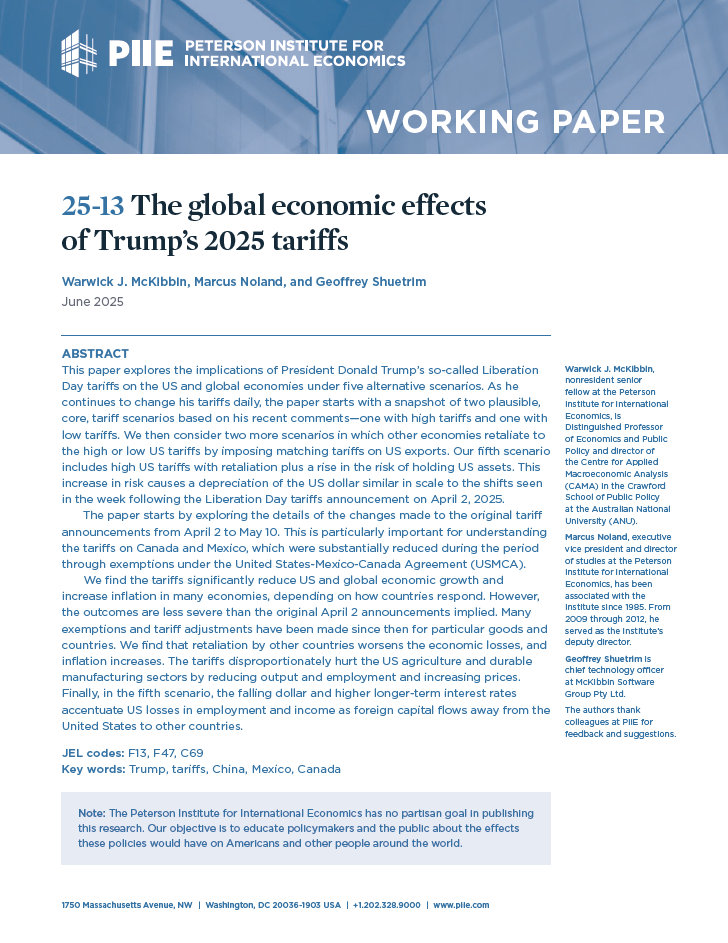
목차
ABSTRACT 1
INTRODUCTION 2
CONTEXT 3
THE MODELING FRAMEWORK 5
MODELING US TARIFFS 5
Table 1 High- and low-disruption scenarios 6
MODELING CHANGES IN COUNTRY RISK 7
RESULTS 7
Table 2a High-tariff scenario: US tariff increases by country/group and sector after adjusting for exemptions (percentage points) 8
Table 2b High-tariff scenario: Retaliatory tariff increases on US exported goods (percentage points) 9
Table 3a Low-tariff scenario: US tariff increases by country/group and sector after adjusting for exemptions (percentage points) 10
Table 3b Low-tariff scenario: Retaliatory tariff increases on US exported goods (percentage points) 11
Figure 1 Results for the United States under five scenarios, 2025–35 (deviations from baseline for each year) 12
Figure 2 Results for the United States in agriculture and durable manufacturing under five scenarios, 2025–35 (deviations from baseline for each year) 13
Figure 3 Results for China under five scenarios, 2025–35 (deviations from baseline for each year) 16
TRADE DIVERSION EFFECTS 17
Figure 4 Results for Canada under five scenarios, 2025–35 (deviations from baseline for each year) 18
Figure 5 Results for Mexico under five scenarios, 2025–35 (deviations from baseline for each year) 19
Table 4
Change in durable and nondurable manufacturing imports from China as a percent of the importing country/group GDP 20
CONCLUSION 21
REFERENCES 22
APPENDIX A Details of the G-Cubed Model 24
APPENDIX B Calculating the Tariff Shocks 26
해시태그
관련자료
AI 100자 요약·번역서비스
인공지능이 자동으로 요약·번역한 내용입니다.


